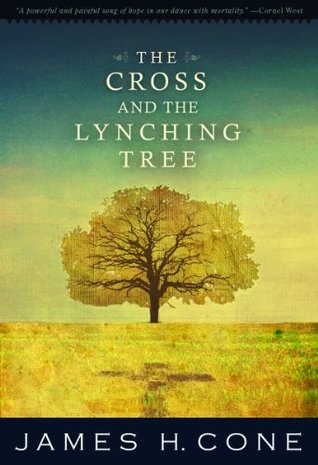More on this book
Community
Kindle Notes & Highlights
The cross has been transformed into a harmless, non-offensive ornament that Christians wear around their necks. Rather than reminding us of the “cost of discipleship,” it has become a form of “cheap grace,”[3] an easy way to salvation that doesn’t force us to confront the power of Christ’s message and mission.
how to reconcile the gospel message of liberation with the reality of black oppression.
The cross helped me to deal with the brutal legacy of the lynching tree, and the lynching tree helped me to understand the tragic meaning of the cross.
The cross is a paradoxical religious symbol because it inverts the world’s value system with the news that hope comes by way of defeat, that suffering and death do not have the last word, that the last shall be first and the first last.
That God could “make a way out of no way” in Jesus’ cross was truly absurd to the intellect, yet profoundly real in the souls of black folk.
The cross was God’s critique of power—white power—with powerless love, snatching victory out of defeat.
Both the cross and the lynching tree represented the worst in human beings and at the same time “an unquenchable ontological thirst”[1] for life that refuses to let the worst determine our final meaning.
experience “love and loss” as a liberating catharsis.
“The blues,” as Ralph Ellison put it, “is an impulse to keep the painful details and episodes of a brutal experience alive in one’s aching consciousness, to finger its jagged grain, and to transcend it, not by the consolation of philosophy but by squeezing from it a near-tragic, near-comic lyricism.”[26]
When an adult black male is treated like a child in a patriarchal society—with whites calling him “boy,” “uncle,” and “nigger”—proclaiming oneself a “man” is a bold and necessary affirmation of black resistance.
If you live under that system for so long, then it don’t bother you openly, but mentally, way back in your mind it bugs you. . . . Later on you sometime will think about this and you wonder why, so that’s where your blues come in, you really bluesy then, y’see, because you hurt deep down, believe me, I’ve lived through it, I know. I’m still trying to say what the blues means to me. So I sing about it.[35]
If the blues offered an affirmation of humanity, religion offered a way for black people to find hope.
While the lynching tree symbolized white power and “black death,” the cross symbolized divine power and “black life”—God overcoming the power of sin and death.
the loss of hope that life could have meaning in a world full of trouble. The story of Job is the classic expression of utter despair in the face of life’s great contradictions:
When people do not want to be themselves, but somebody else, that is utter despair.
One has to be a little mad, kind of crazy, to find salvation in the cross, victory in defeat, and life in death.
The cross places God in the midst of crucified people, in the midst of people who are hung, shot, burned, and tortured.
Niebuhr taught that love is the absolute, transcendent standard that stands in judgment over what human beings can achieve in history. Because of human finitude and humanity’s natural tendency to deny it (sin), we can never fully reach that ethical standard. The best that humans can strive for is justice, which is love approximated, a balance of power among competing groups.
faith defined by humility and repentance.
Our freedom creates anxiety and insecurity, causing us both as individuals and as groups to seek security among our own kind through various forms of power over others in politics, religion, and knowledge.
If religious idealism does not help us to live together decently with members of other races and groups, it is not producing the kind of social imagination without which religion becomes a sounding brass and a tinkling symbol.”
“When I was a rabbi of the Jewish community in Berlin under the Hitler regime . . . the most important thing I learned under those tragic circumstances was that bigotry and hatred are not the most urgent problems. The most urgent and most disgraceful, the most shameful, the most tragic problem is silence.”[51]
Everybody hates everybody. . . . It’s about power. . . . I don’t care whether Senator Eastland [of Mississippi] or Barry Goldwater [of Arizona] likes me. . . . I do care that they have the power to keep me out of a home, out of a job, and to put my child on a needle. . . . I don’t care what they think or what they feel; I care about their power.”
What Niebuhr said about love, power, and justice helped me to understand that moral suasion alone would never convince whites to relinquish their supremacy over blacks. Only Black Power could do that, because power, as Frederick Douglass said long before Niebuhr was born, concedes nothing without struggle.
What most whites call “integration” (or in the language of today, diversity) is often merely “tokenism.” There is very little justice in any educational institution where black presence is less than 20 percent of the faculty, students, and board members. There is no justice without power; and there is no power with one, two, or three tokens.
Prophets take risks and speak out in righteous indignation against society’s treatment of the poor, even risking their lives, as we see in the martyrdom of Jesus and Martin King.
“Courage is the primary test of prophesy,”


